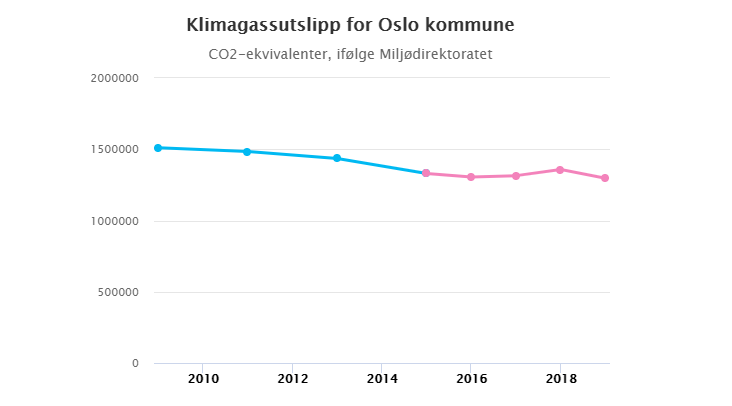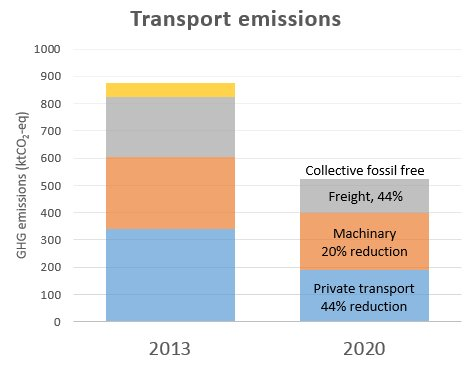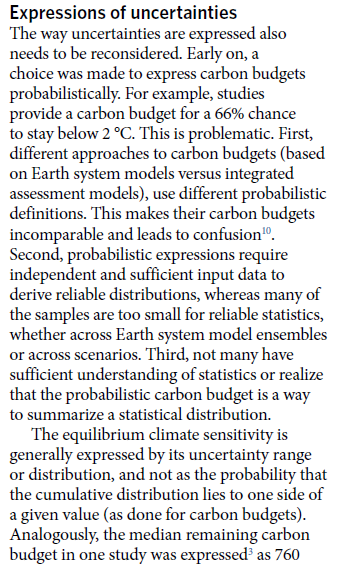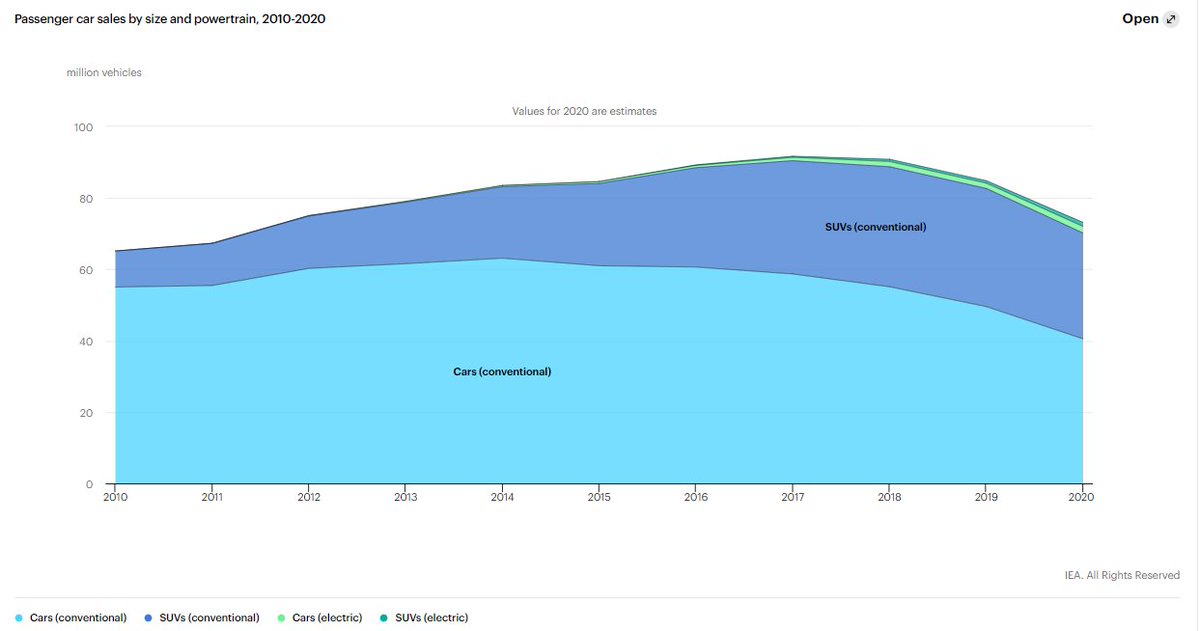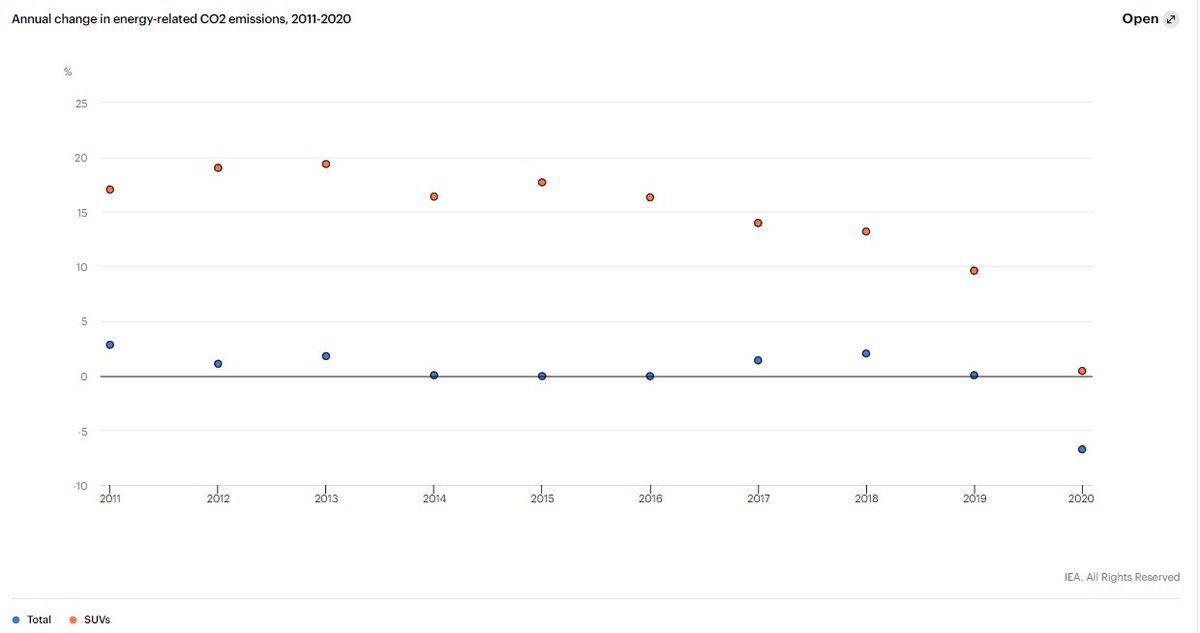
THREAD: Climate risks & scenarios
[based on a presentation]
Financial institutions are asked to assess climate risk “…, taking into consideration different climate-related scenarios, including a 2°C or lower scenario.”
So, which scenario(s) do they use?
1/
[based on a presentation]
Financial institutions are asked to assess climate risk “…, taking into consideration different climate-related scenarios, including a 2°C or lower scenario.”
So, which scenario(s) do they use?
1/
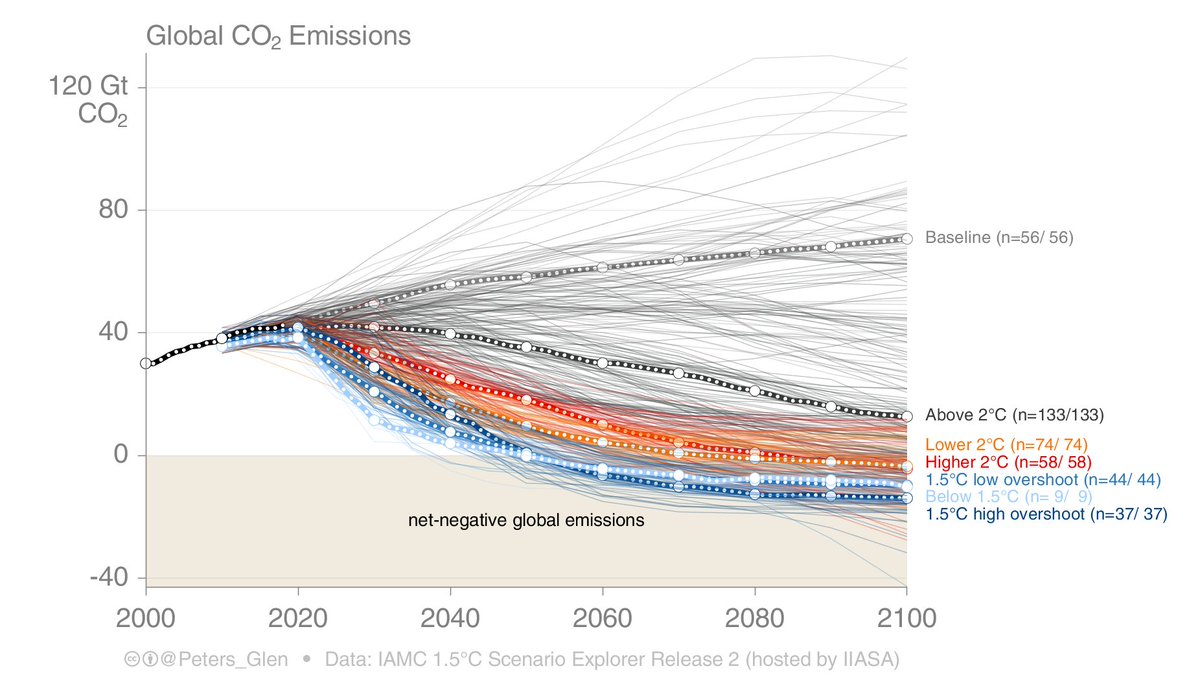
2. It depends on the risk!
Easiest to frame around where we are heading (black line - approximate)
Climate risk: We have risk already, but we are concerned about it getting worse
Transition risk: We are mitigating, but policy, technology, society might make that happen faster
Easiest to frame around where we are heading (black line - approximate)
Climate risk: We have risk already, but we are concerned about it getting worse
Transition risk: We are mitigating, but policy, technology, society might make that happen faster

3. There is likely a drop in emissions from COVID of ~7%, but the IEA (& others) expect a rebound. Most analysts think emissions will be flat(ish) in the next decade.
The goal is to get to net-zero CO₂ emissions. When? Short answer: the earlier the better...
The goal is to get to net-zero CO₂ emissions. When? Short answer: the earlier the better...

4. The IEA & IPCC scenarios (shown in blue for 1.5°C) are all very consistent when compared like-for-like.
The IEA communicates "where we are heading" (Stated Policies, roughly), something the IPCC has not really done making many think we are heading along RCP8.5.
The IEA communicates "where we are heading" (Stated Policies, roughly), something the IPCC has not really done making many think we are heading along RCP8.5.
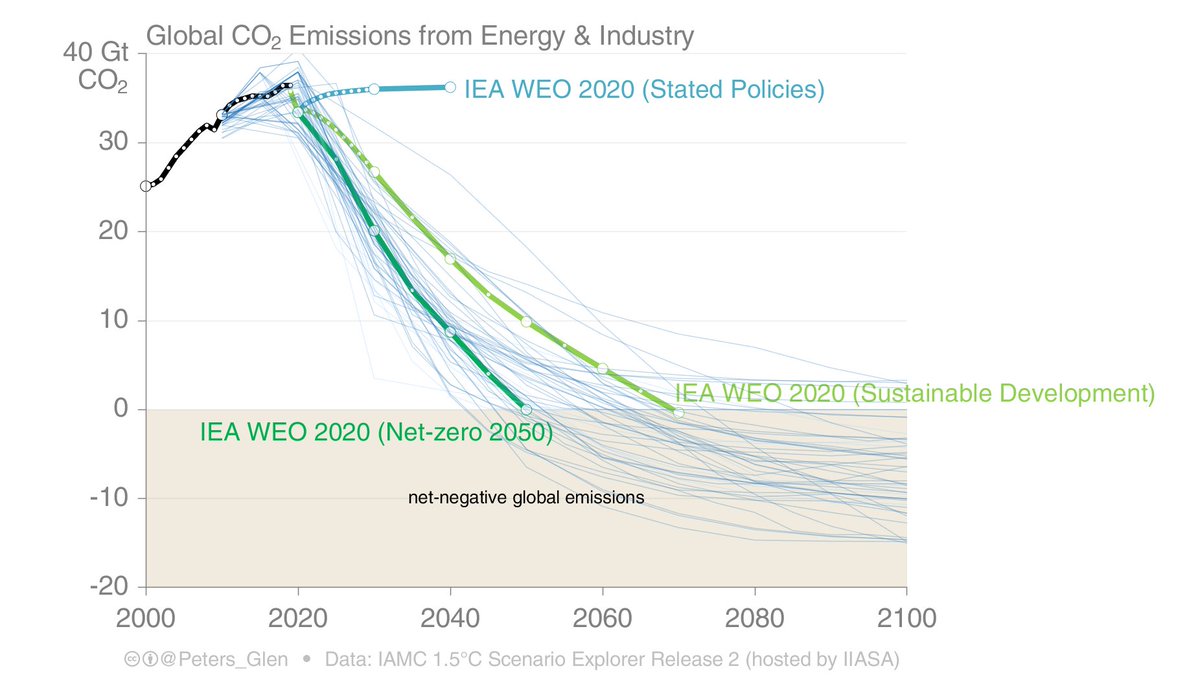
5. It matters where we are heading.
Since we do actually have climate policies (albeit weak), it means oil companies should be investing less in oil than if we had no policy! You can check this!
And, if they are serious about 1.5°C, they would be investing even less in oil.
Since we do actually have climate policies (albeit weak), it means oil companies should be investing less in oil than if we had no policy! You can check this!
And, if they are serious about 1.5°C, they would be investing even less in oil.

6. But, scenarios do not hold all answers. They are one piece in a big puzzle.
Scenario users have to understand the limits of IAMs & scenarios. They also need to use additional information to supplement the weaknesses of scenarios.
Scenario users have to understand the limits of IAMs & scenarios. They also need to use additional information to supplement the weaknesses of scenarios.
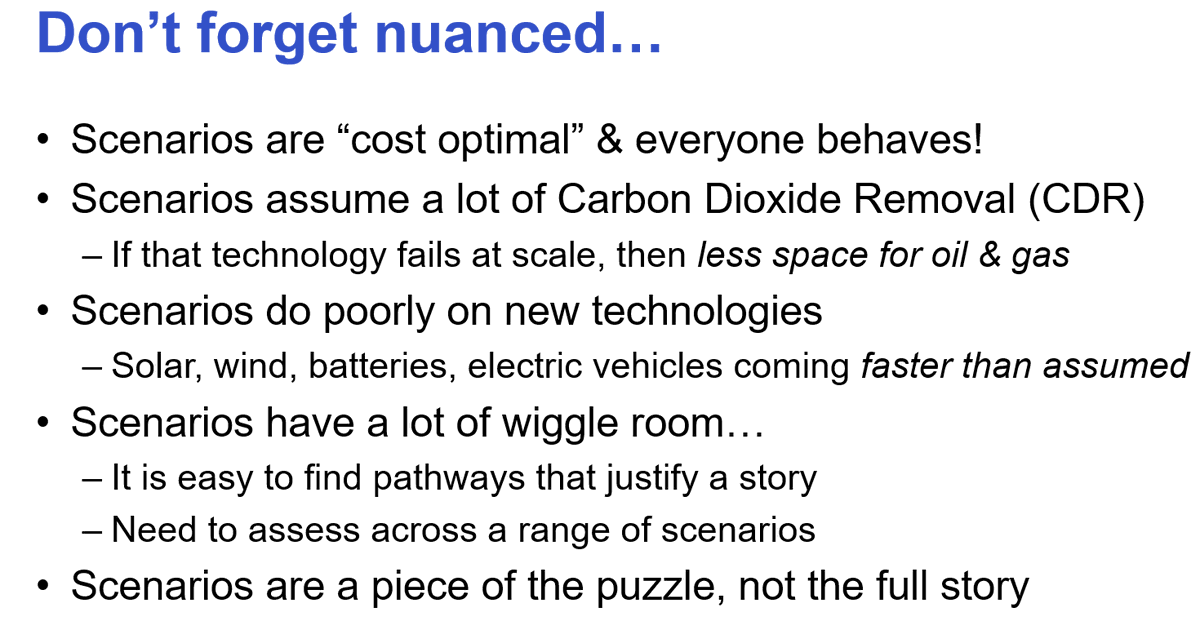
7. Together with @UNEP_FI, we will soon have a guide on some of the challenges of using IAMs & scenarios. To be released 17 Feb 2021. 
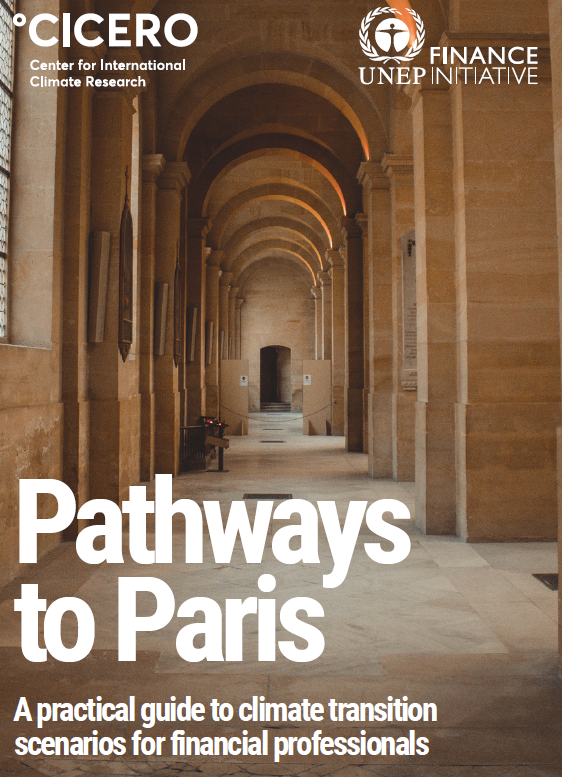
8. @CICERO_klima has a project starting up on Stress Testing with scenarios, so reach out if you are interested...
cicero.oslo.no/en/posts/proje…
And don't forget to check out the work in @ParisReinforce which is also very relevant paris-reinforce.eu
cicero.oslo.no/en/posts/proje…
And don't forget to check out the work in @ParisReinforce which is also very relevant paris-reinforce.eu

9. And @CICERO_klima has already demystified climate scenarios for investors, with the help of @CSClapp @CICERO_Green cicero.oslo.no/en/posts/news/… 

10. You can watch my presentation here
Slides here slideshare.net/GlenPeters_CIC…
And also see the other great presentations here (Norwegian) regjeringen.no/no/aktuelt/kli…
Slides here slideshare.net/GlenPeters_CIC…
And also see the other great presentations here (Norwegian) regjeringen.no/no/aktuelt/kli…

• • •
Missing some Tweet in this thread? You can try to
force a refresh

